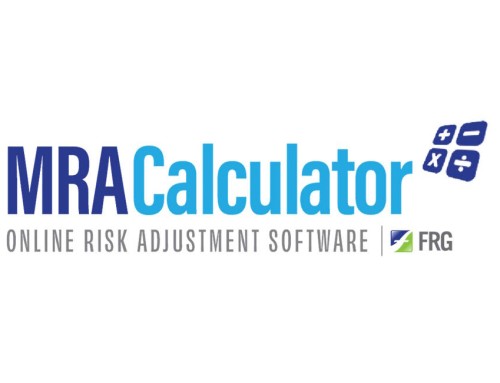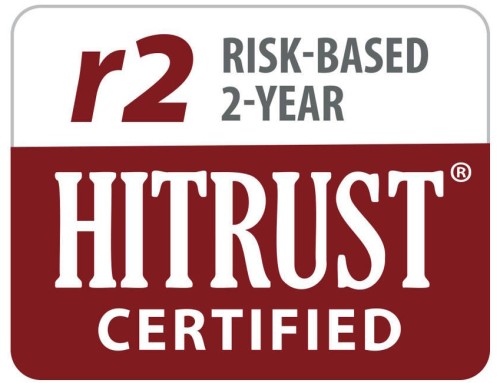“Taking financial risk is no longer an option. It is a requirement.” – CAPG
The Medicare Access and CHIP Reauthorization Act of 2015 (MACRA) will ultimately make taking financial responsibility for managing a population’s consumption of healthcare resources mandatory for physician groups that want to stay in the game. The writing is on the wall. Some even say the end of fee for service is nigh. Hyperbole aside, the California Association of Provider Groups (CAPG) has enthusiastically, and rightly in our view, supported this initiative through regular communication to its membership and national advocacy regarding the movement of value based healthcare.
What is MACRA?
Simply put, The Department of Health and Human Services (HHS) has issued new rules to align revenue allocation and operational excellence for Medicare, Medicaid and the Children’s Health Insurance Program (CHIP) benefit programs. According to CMS’s April 2016 press release, these rules (paraphrased) advance delivery system reform efforts, strengthen quality & consumer protections, promote accountability and transparency, and since we’re on the subject, align Medicaid managed care rules with other health insurance coverage programs. It’s a big deal.
There are many facets to the legislation, as is characteristic of any healthcare law. The most potent elements to transparency and medical economics are associated with aligning financial incentives. Standardizing the definition of components of medical loss ratios, for example, across Medicare Advantage and managed Medicaid programs is particularly useful. Streamlining associated with Provider Incentive Plan regulations across programs is also noteworthy, albeit chiefly editorial. Finally, welcome additions are formalized quality-oriented incentives, provider network frameworks, and the Medicaid Quality Rating system, all of which should help improve comparability of delivery system quality analysis from state to state.
The most dramatic component of the legislation, however, is the creation of new payment models which will directly influence Medicare provider compensation by freezing fee schedules in 2019 and creating a value based healthcare mechanism for rate increases instead of an inflation-oriented approach.
MACRA’s Market Impact
MACRA and its reforms will have a significant impact across the system. Although Medicare and Medicaid – government entitlement programs (depicted below in green as “public”) – do not constitute the majority of healthcare spending, together they represent as much 40% of national healthcare expenditure and the fastest growing segment. They will amount to $2.3 Trillion by 2025 as the population ages and the volume of total healthcare spend expands from $3.4 Trillion to an estimated $5.6 Trillion. A 40% change in any market will ripple out.
Public and Private Sector Spending Projections
$3.4 Trillion
$5.6 Trillion
Buyer-Side Impacts: Payers
Why look at the combined impact when the programs are so different? Regulators in both benefit spaces (i.e. the “buyers” or “payers”) are grappling with the same utilization and unit cost challenges in the face of budgets that are finite. On one hand, Medicare has adopted the alternative payment models to address a structural weakness in a historically pay-for-activity system and stop the insanity of annually legislating increases or cuts in fee schedules (see Sustainable Growth Rate or SGR). They have found that financial risk transfer to Medicare Advantage operators can reduce exposure and that Innovation Center initiatives in Accountable Care can create savings. Medicaid operators, on the other hand, face similar overruns where the demand is often population-driven. Both need provider organizations to manage how resources are allocated in ways that serve patient’s health, and meet the health needs of beneficiary populations. In fact, already we see Medicaid directors, despite some structural differences in the network components and benefit structure, seeking payment reform analogs. In time, 40% of the market will demonstrate that costs can be contained and service improved through payment reform.
The rest of the market, chiefly buyers of private insurance and self-funded medicine (employers or group purchasing entities), continuing to face double digit health care premium increases (because providers need to charge to offset losses in government payer fee schedules) and higher taxes (because entitlement programs are the preponderance of federal and state budgets) will take notice and inevitably take action. This will be the proverbial “other shoe” when it happens. When it will drop is unclear, but when the government starts getting more bang for its buck, commercial buyers will follow quickly behind (mostly because they can’t just issue more Treasury Bonds to China).
Supplier-Side Impact: Providers
Even if the broader market changes heralded by MACRA are not realized through changes in insurance programs, they may come as a result of supplier-side (i.e. provider) adaptations. Process standardization is an inevitable result of MACRA.
In most medical offices, the payer mix, the concentration of patients with health insurance from different sources, and the corresponding collection ratios, directly impact financial performance and thus have a significant bearing on both strategic decision-making and operational configuration. At Nirvana Internal Medicine (fictitious), operators are able to train physicians and office staff to customize every encounter based on the purchasing requirements of the patient’s carrier. In real life, however, since shortages in primary care providers have been recurring themes in the medical literature, and turnover in office staff creates challenges for maintaining process consistency, and information system transformation adds stress to an already complex environment, … provider organizations are already – and will continue to be – challenged to tailor practice patterns to the disparate expectations of populations with different responsible parties. Furthermore, it is more likely that Hectic General Practice (fictitious), chiefly due to the preponderance of care activity MACRA impacts, will avoid the job shop operating strategy and seek to build practice patterns in a unified process workflow, regardless of a patient’s carrier.
If this caricature has enough truth, this legislation will drive a broader shift to value based healthcare as providers change their practice patterns to accommodate the requirements of treating beneficiaries of public programs. Excellent operators know you can only run a job shop production environment for so long in the face of increasing demand and remain profitable. Standardization and streamlining creates efficiencies that office staff can execute when each patient follows the same basic management process.
Why MACRA?
The advent of this change, however, is not surprising. By these same figures (above) we see the growth of government healthcare spending programs will outpace that of private funding over the next decade. Though the concentration will continue to hover around 40%, the outright magnitude will remain substantial.
National Healthcare Expenditure (in Billions)
| Category | 2016 | 2025 | Growth |
|---|---|---|---|
| Private | $2,076 | $3,349 | 61.3% |
| Public | $1,275 | $2,282 | 79.0% |
| Total | $3,351 | $5,631 | 68.1% |
Data Source: CMS National Healthcare Expenditure Data. July, 2016
As fiscal responsibility continues to dominate the contemporary political debate, and as eligibility for programs continues to increase enrollment in the same from its current dramatic levels of 128.4 million Americans nationwide in 2016 (Medicaid at 72.9 million and Medicare at 55.5 million), and as the number of individuals in public benefit programs continues to grow, it is not surprising that administrators and policy makers were drawn to seek to implement the Institute for Health Care Improvement’s Triple Aim. Improving the quality of care, lowering the cost of healthcare and improving the overall patient experience makes great sense. After all, value is what people want in volume purchasing.
Getting to Value
If Value Based Healthcare is the goal, then MACRA is the catalyst – at least for the 55.5 million people in Medicare. The good news, however, is that as many as 31% of Medicare beneficiaries are already enrolled in a Medicare Advantage plan, and potentially part of a value based contract, though we know penetration of agreements transferring Substantial Financial Risk varies by market. Transitioning physician payments models associated with activity for the other 70 percent (close to 40 million beneficiaries), however, will be the most painful step.
Many groups realize losses as they changeover from Fee for Service to Value. It takes time and a new operational discipline for panels to become well managed. Some argue that the patients themselves need to be re-trained to participate in risk adjustment programs ritually, regardless of acute medical needs. Worse, many groups never make the climb to profitability, albeit for a variety of reasons. Maybe they lack the technology to see identify outreach priorities. Some take on large panels hoping the law of large numbers saves them, but it does the opposite. Some continue to operate on a demand-driven scheduling program when an active scheduling program will help them engage the patients that are most likely to drive costs.
The Centers for Medicare and Medicaid Services (CMS) and the Department of Health & Human Services(HHS) has set the stage, however. The Innovation Center has laid foundations in quality and accountability, and MACRA enables the following reforms:
- Supporting States’ efforts to advance delivery system reform & improving the quality of care through the Quality Rating System(QRS) and allowing states to enter into contracts that pay plans for quality & participation in value based healthcare payment models.
- Strengthening the patient experience through higher standards in communications, enrollment, care coordination & accessibility of covered services.
- Establishing network adequacy standards for managed care while allowing states flexibility to set their actual standards.
- Promoting accountability to strengthen program integrity through transparency regarding fiscal standards, data relating to utilization and quality of services.
- Aligning rules across all health insurance programs regarding reporting of medical loss ratios, appeals processes & disseminating patient information.
All of these elements will bring us closer to a model of paying for healthcare that addresses inconsistencies and variability in operations and aligns the actors financially. And if you think taking risk is a now a requirement, you might say the writing was on the wall.







Leave A Comment